Olav Tirkkonen
INSA Rennes, IETR
Channel Charting for Streaming CSI Data
Dec 07, 2023



Abstract:Channel charting (CC) applies dimensionality reduction to channel state information (CSI) data at the infrastructure basestation side with the goal of extracting pseudo-position information for each user. The self-supervised nature of CC enables predictive tasks that depend on user position without requiring any ground-truth position information. In this work, we focus on the practically relevant streaming CSI data scenario, in which CSI is constantly estimated. To deal with storage limitations, we develop a novel streaming CC architecture that maintains a small core CSI dataset from which the channel charts are learned. Curation of the core CSI dataset is achieved using a min-max-similarity criterion. Numerical validation with measured CSI data demonstrates that our method approaches the accuracy obtained from the complete CSI dataset while using only a fraction of CSI storage and avoiding catastrophic forgetting of old CSI data.
Model-based Deep Learning for Beam Prediction based on a Channel Chart
Dec 04, 2023Abstract:Channel charting builds a map of the radio environment in an unsupervised way. The obtained chart locations can be seen as low-dimensional compressed versions of channel state information that can be used for a wide variety of applications, including beam prediction. In non-standalone or cell-free systems, chart locations computed at a given base station can be transmitted to several other base stations (possibly operating at different frequency bands) for them to predict which beams to use. This potentially yields a dramatic reduction of the overhead due to channel estimation or beam management, since only the base station performing charting requires channel state information, the others directly predicting the beam from the chart location. In this paper, advanced model-based neural network architectures are proposed for both channel charting and beam prediction. The proposed methods are assessed on realistic synthetic channels, yielding promising results.
Wireless Channel Charting: Theory, Practice, and Applications
Apr 17, 2023Abstract:Channel charting is a recently proposed framework that applies dimensionality reduction to channel state information (CSI) in wireless systems with the goal of associating a pseudo-position to each mobile user in a low-dimensional space: the channel chart. Channel charting summarizes the entire CSI dataset in a self-supervised manner, which opens up a range of applications that are tied to user location. In this article, we introduce the theoretical underpinnings of channel charting and present an overview of recent algorithmic developments and experimental results obtained in the field. We furthermore discuss concrete application examples of channel charting to network- and user-related applications, and we provide a perspective on future developments and challenges as well as the role of channel charting in next-generation wireless networks.
Modular CSI Quantization for FDD Massive MIMO Communication
Mar 23, 2023Abstract:We consider high-dimensional MIMO transmissions in frequency division duplexing (FDD) systems. For precoding, the frequency selective channel has to be measured, quantized and fed back to the base station by the users. When the number of antennas is very high this typically leads to prohibitively high quantization complexity and large feedback. In 5G New Radio (NR), a modular quantization approach has been applied for this, where first a low-dimensional subspace is identified for the whole frequency selective channel, and then subband channels are linearly mapped to this subspace and quantized. We analyze how the components in such a modular scheme contribute to the overall quantization distortion. Based on this analysis we improve the technology components in the modular approach and propose an orthonormalized wideband precoding scheme and a sequential wideband precoding approach which provide considerable gains over the conventional method. We compare the performance of the developed quantization schemes to prior art by simulations in terms of the projection distortion, overall distortion and spectral efficiency, in a scenario with a realistic spatial channel model.
Optimal Bandwidth Allocation for Multicast-Cache-Aided on-Demand Streaming in Wireless Networks
May 18, 2022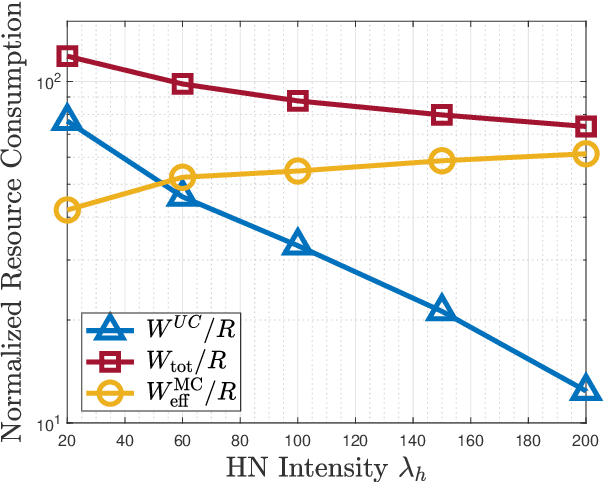

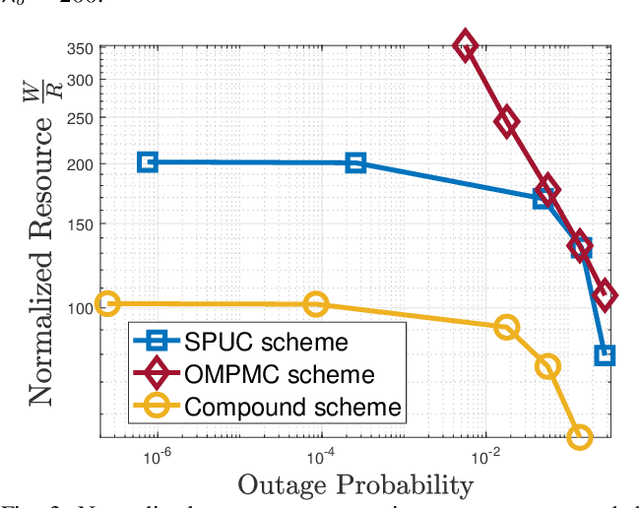

Abstract:We consider a hybrid delivery scheme for streaming content, combining cache-enabled Orthogonal Multipoint Multicast (OMPMC) and on-demand Single-Point Unicast (SPUC) transmissions for heterogeneous networks. The OMPMC service transmits cached files through the whole network to interested users, and users not being satisfied by this service are assigned to the SPUC service to be individually served. The SPUC fetches the requested files from the core network and unicasts them to UEs using cellular beamforming transmissions. We optimize the delivery scheme to minimize the average resource consumption in the network. We formulate a constrained optimization problem over the cache placement and resource allocation of the OMPMC component, as well as the multi-user beamforming scheme of the SPUC component. We apply a path-following method to find the optimal traffic offloading solution. The solutions portray a contrast between the total amount of consumed resources and service outage probability. Simulation results show that the hybrid scheme provides a better tradeoff between the amount of network-wide consumed resources and the service outage probability, as compared to schemes from the literature.
Pilot Reuse for mMTC with Spatially Correlated MIMO Channels: A Channel Charting Approach
Mar 13, 2022

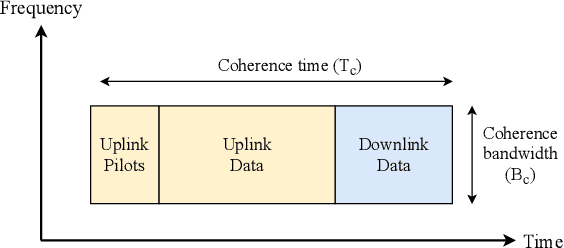

Abstract:Massive multiple-input multiple-output (mMIMO) technology is a way to increase the spectral efficiency of machine-type communications (MTC). To exploit the benefits from large antenna arrays, accurate channel estimation through pilot signals is needed. Massive MTC systems cannot avoid pilot reuse due to the enormous numbers of connected devices. We propose a pilot reuse algorithm based on channel charting (CC) to mitigate pilot contamination in a multi-sector single-cell massive MTC system having spatially correlated channels. We show that after creating an interference map via CC, a simple strategy to allocate the pilot sequences can be implemented. The simulation results show that the CC-based pilot reuse strategy improves channel estimation accuracy, which subsequently improves the symbol detection performance and increases the spectral efficiency compared to other existing schemes. Moreover, the performance of the CC pilot assignment method approaches that of exhaustive search pilot assignment for small network setups.
Joint Channel Estimation and Data Detection in Cell-Free Massive MU-MIMO Systems
Oct 29, 2021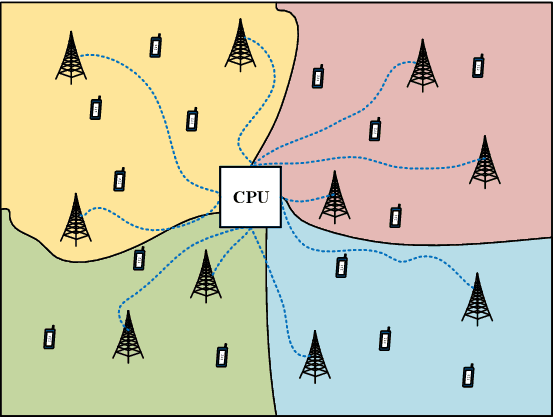



Abstract:We propose a joint channel estimation and data detection (JED) algorithm for densely-populated cell-free massive multiuser (MU) multiple-input multiple-output (MIMO) systems, which reduces the channel training overhead caused by the presence of hundreds of simultaneously transmitting user equipments (UEs). Our algorithm iteratively solves a relaxed version of a maximum a-posteriori JED problem and simultaneously exploits the sparsity of cell-free massive MU-MIMO channels as well as the boundedness of QAM constellations. In order to improve the performance and convergence of the algorithm, we propose methods that permute the access point and UE indices to form so-called virtual cells, which leads to better initial solutions. We assess the performance of our algorithm in terms of root-mean-squared-symbol error, bit error rate, and mutual information, and we demonstrate that JED significantly reduces the pilot overhead compared to orthogonal training, which enables reliable communication with short packets to a large number of UEs.
Exploiting Spatial Correlation for Pilot Reuse in Single-Cell mMTC
Apr 24, 2021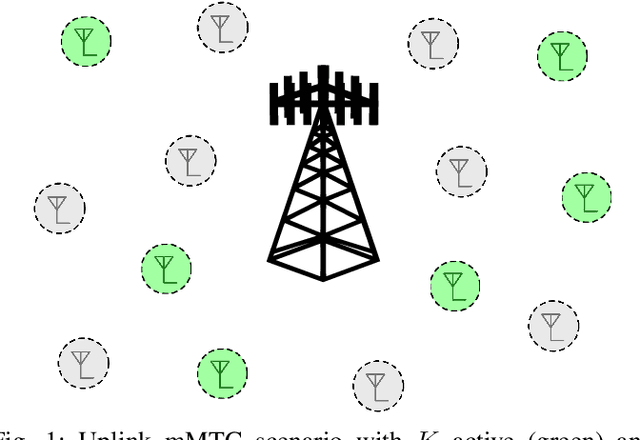
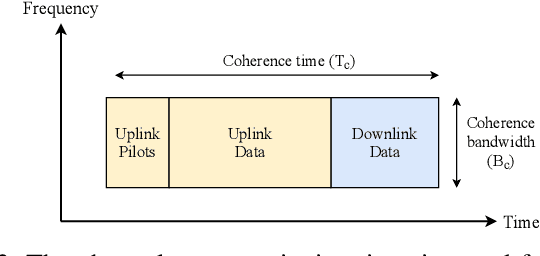
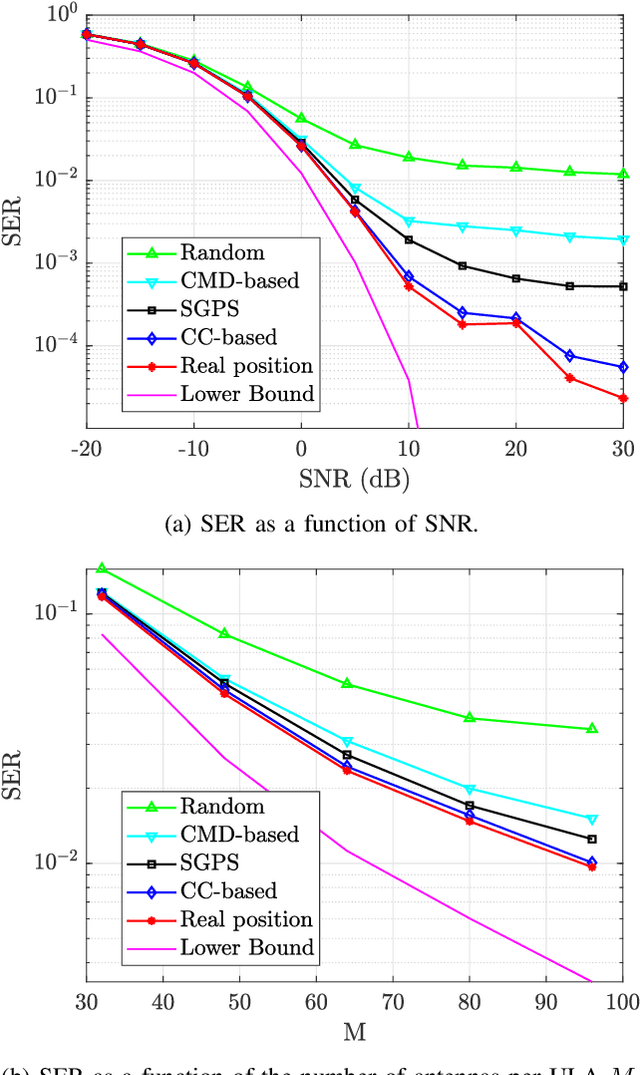
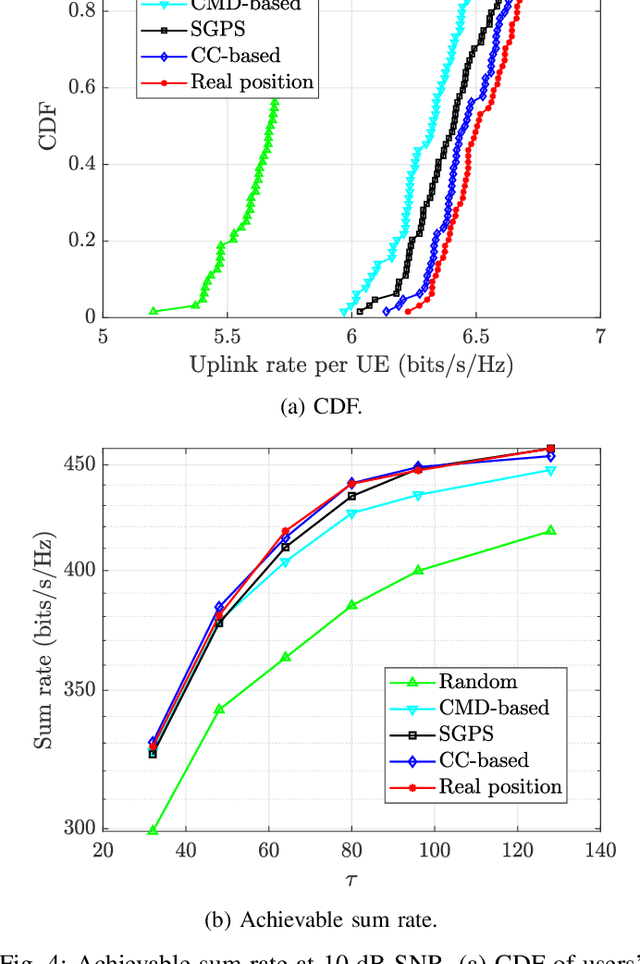
Abstract:As a key enabler for massive machine-type communications (mMTC), spatial multiplexing relies on massive multiple-input multiple-output (mMIMO) technology to serve the massive number of user equipments (UEs). To exploit spatial multiplexing, accurate channel estimation through pilot signals is needed. In mMTC systems, it is impractical to allocate a unique orthogonal pilot sequence to each UE as it would require too long pilot sequences, degrading the spectral efficiency. This work addresses the design of channel features from correlated fading channels to assist the pilot assignment in multi-sector mMTC systems under pilot reuse of orthogonal sequences. In order to reduce pilot collisions and to enable pilot reuse, we propose to extract features from the channel covariance matrices that reflect the level of orthogonality between the UEs channels. Two features are investigated: covariance matrix distance (CMD) feature and CMD-aided channel charting (CC) feature. In terms of symbol error rate and achievable rate, the CC-based feature shows superior performance than the CMD-based feature and baseline pilot assignment algorithms.
A Big Data Enabled Channel Model for 5G Wireless Communication Systems
Feb 28, 2020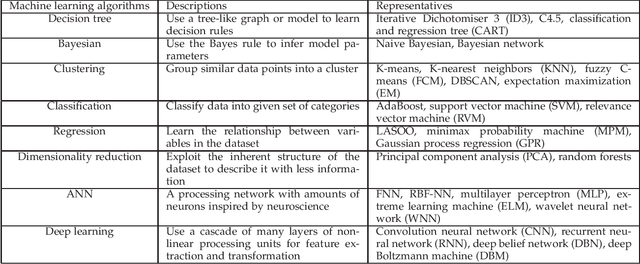
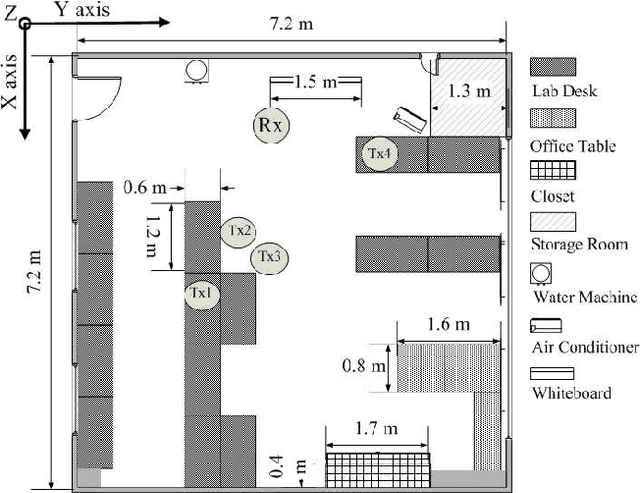
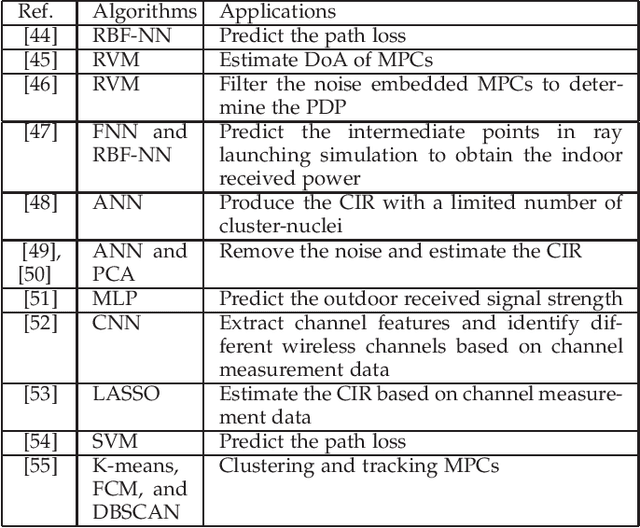
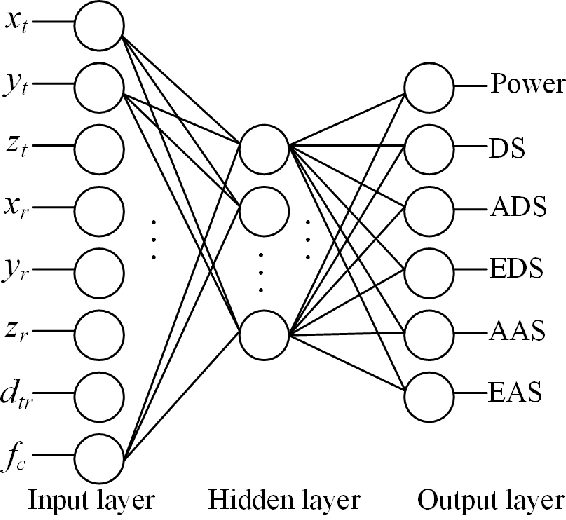
Abstract:The standardization process of the fifth generation (5G) wireless communications has recently been accelerated and the first commercial 5G services would be provided as early as in 2018. The increasing of enormous smartphones, new complex scenarios, large frequency bands, massive antenna elements, and dense small cells will generate big datasets and bring 5G communications to the era of big data. This paper investigates various applications of big data analytics, especially machine learning algorithms in wireless communications and channel modeling. We propose a big data and machine learning enabled wireless channel model framework. The proposed channel model is based on artificial neural networks (ANNs), including feed-forward neural network (FNN) and radial basis function neural network (RBF-NN). The input parameters are transmitter (Tx) and receiver (Rx) coordinates, Tx-Rx distance, and carrier frequency, while the output parameters are channel statistical properties, including the received power, root mean square (RMS) delay spread (DS), and RMS angle spreads (ASs). Datasets used to train and test the ANNs are collected from both real channel measurements and a geometry based stochastic model (GBSM). Simulation results show good performance and indicate that machine learning algorithms can be powerful analytical tools for future measurement-based wireless channel modeling.
Siamese Neural Networks for Wireless Positioning and Channel Charting
Sep 29, 2019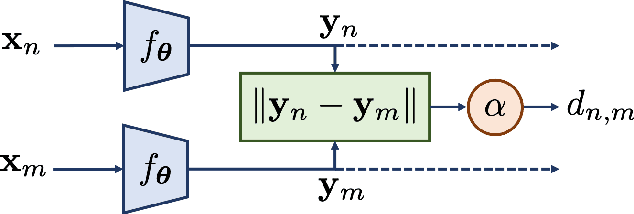
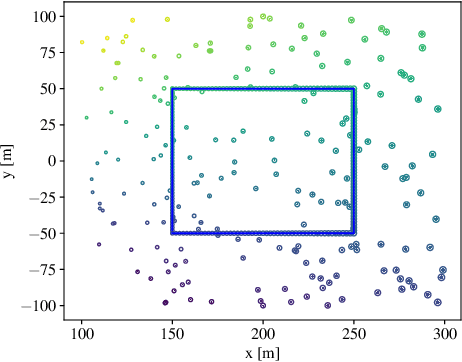


Abstract:Neural networks have been proposed recently for positioning and channel charting of user equipments (UEs) in wireless systems. Both of these approaches process channel state information (CSI) that is acquired at a multi-antenna base-station in order to learn a function that maps CSI to location information. CSI-based positioning using deep neural networks requires a dataset that contains both CSI and associated location information. Channel charting (CC) only requires CSI information to extract relative position information. Since CC builds on dimensionality reduction, it can be implemented using autoencoders. In this paper, we propose a unified architecture based on Siamese networks that can be used for supervised UE positioning and unsupervised channel charting. In addition, our framework enables semisupervised positioning, where only a small set of location information is available during training. We use simulations to demonstrate that Siamese networks achieve similar or better performance than existing positioning and CC approaches with a single, unified neural network architecture.
 Add to Chrome
Add to Chrome Add to Firefox
Add to Firefox Add to Edge
Add to Edge